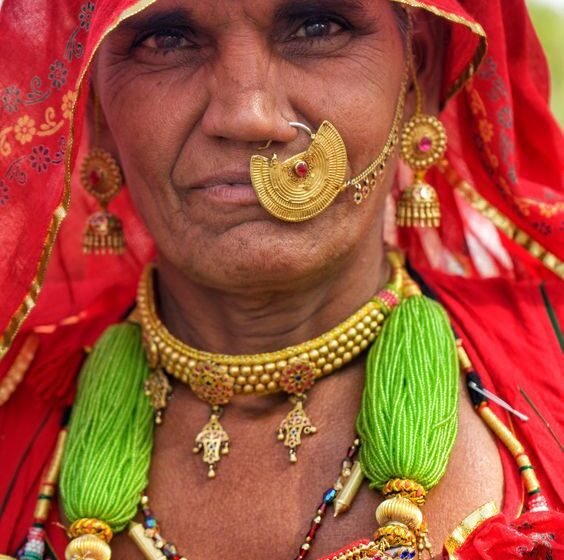The Bishnoi Community: Environmental Conservation and Spiritual Traditions in Rajasthan

The Bishnoi community, that was established by in the 15th century by Guru Jambeshwar is a steadfast guardian of environmental conservation with its population that has now reached about approximately 1.5 million. Their ethos is deeply rooted in their sanctity of life. This provides a window for us to see the harmonious relationship between humans and nature, that goes beyond time. At the heart of their beliefs lies a profound reverence for the interconnectedness of all living beings, it is a philosophy in a way that has shaped their actions for over five centuries.

The landscapes of Rajasthan, and in between them the wilderness of deer and antelopes, one can witness the magnificent scene of Ghevar Ram, tenderly caressing an injured fawn at a rescue center. This showcases the compassion of the Bishnoi community and along with that, it shows their commitment to protect the environment is as enduring as the deserts that surrounds them. This community has historically been deeply connected to agrarian practices, however, in recent years, there has been a gradual shift towards urbanization, driven by aspirations for better job opportunities and education while still maintaining ties to agriculture.
Rajasthan, a place where majority of the Bishnoi’s reside, presents a unique landscaped that is characterized by extensive arid regions, that includes the Thar deserts, one of the most popular deserts globally. Despite the harsh environmental conditions, this place has remarkable biodiversity, which is attributed in part to the diverse landscapes present in the region. What plays a pivotal role in sustaining this biodiversity is their protection and conservation efforts.

Rooted in the teachings of Guru Jambhoji, is the essence of Bishnoi principle. Among the 29 principles, the first one is central to the way of life, which is a concept of maintain personal and environmental purity. This ensures not only physical practices such as bathing, and a prayer but also a conscious effort to ensure minimal harm to all living beings. From filtering water to carefully selecting firewood, every aspect of daily life is imbued with a sense of reverence for the interconnectedness of all life forms. For them, honesty and integrity are few of the many cherished virtues, it fosters a culture of trust and mutual respect. Along with that, spiritual practices like fasting and worshiping lord Vishnu, are integral to the Bishnoi tradition. They serve as a means of inculcating inner peace and spiritual growth among the followers. what amuses us is that even their choice of clothing is color guided by ecological considerations, with traditional dyes carefully selected to minimize harm to environment.
The community got really famous because of the Bishnoi Movement, which stands as a pioneering force in the realm of environmental conservation, wildlife protection and sustainable living in India. They are renowned as the first environmentalist of the nation, which justifies their deep-rooted love and reverence for the nature that permeates every aspect of their lives. Throughout the history, they have at he forefront of environmental activism, and have loudly advocated for the preservation of natural resources and the protection of wildlife.

One of the most influential aspect of the Bishnoi movement is its innovative approach to environmental approach, which is exemplified by the strategy of tree hugging and embracing. This practice that might seem symbolic to some, actually carries great significance within the community itself and along with that symbolizes their commitment to safeguard the earth’s resources.
Let’s talk about the story of Amrita Devi and the Khejari massacre. In the year 1730, king Abhay Singh of Jodhpur ordered his soldiers to cut down the trees in Khejari village, as he wanted to build his new palace. Amrita Devi and her fellow Bishnoi’s bravely stood in defiance and sacrificed their lives in order to protect the trees. This act of resistance is often regarded as one of the earliest environmental movements in history.

However, their legacy extends far beyond individual acts of heroism as it encompasses a holistic approach to sustainable living which is deeply rooted in their ancient traditions and guided by the principles of harmony with nature. From advocating for wildlife protection to promoting green life practices, it is said that the Bishnoi’s continue to lead by examples. Along with that, they also demonstrate the transformative power of environmental stewardship. For the Bishnoi’s, trees are not really resourcing that they could just exploit, they are actually sacred entities deserving of protection and respect. Their cultural importance for trees, is somewhere mixed with their spiritual beliefs. It emphasizes the interconnectedness of all life forms and the importance of living in harmony with nature. They are also dependent on nature in a way, as the forest is an important resource for fuelwood and fodder which further sheds light on their opposition to cutting trees. For many members of the community, particularly living in rural areas, the forest is like their lifeline that provides sustenance for their families and livestock.

The historic movement that took place in the Khejarli village, is a perfect example for the Bishnoi’s unwavering commitment to protecting trees at any cost. When they were faced with imminent threat of cutting trees, the inhabitants rallied together in a remarkable display of solidarity. All they had was courage and solidarity, with which they embraced the Khejri tree, willing to sacrifice their life to defend the forest. It is tragic and harsh that 363 Bishnoi’s had to pay an ultimate price for their convictions. They had to give their lives in order to defend the Khejri trees. Their sacrifice serves as a powerful reminder of the profound bond between humanity and the natural world.
By embracing these practices, this community demonstrate their deep-seated belief in the interconnectedness of humanity and the natural world, creating a path towards sustainable living and protecting the environment. The Bishnoi principle goes beyond these mere rules, they represent a way of life characterized by personal disciplines, spiritual reverence and a profound respect for the environment. as we reflect on their teachings, we are reminded of the profound wisdom that is inherent in living with nature and the transformative power of embodying these principles in our daily lives. As we confront the environmental challenges in the 21st century, the lessons of the Khejarli and the Bishnoi community in general continues to resonate and inspire us to stand in solidarity with the earth and its people in the ongoing struggle for a sustainable future.


